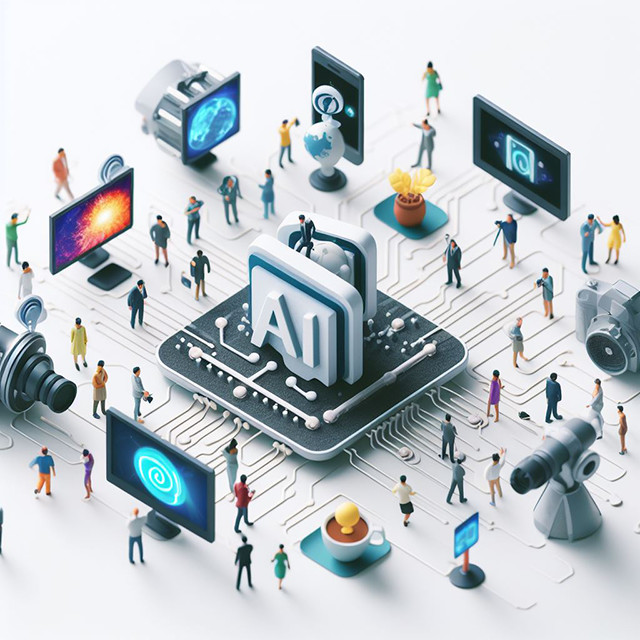Emergent Abilities in Large Language Models: A Promising Future?
Emergence of Surprising Capabilities in Large Language Models
In recent years, the field of natural language processing has seen remarkable advancements driven by the development of large language models (LLMs). These models, trained on vast amounts of textual data, have demonstrated an ability to generate human-like text, answer questions, and even engage in creative tasks like writing stories and poetry.
A particularly exciting area of research involves the emergent abilities observed in LLMs and other AI systems. Emergent abilities refer to capabilities that were not explicitly trained into the models, but rather spontaneously emerge as the models grow larger and are exposed to more data. These could include skills like multi-step reasoning, knowledge synthesis across domains, multimodal understanding, and even creative generation.
However, as researchers continue to push the boundaries of these models, they are discovering that LLMs exhibit emergent capabilities that go beyond their original design and training objectives. These unexpected abilities have sparked excitement and intrigue within the scientific community, prompting researchers to delve deeper into understanding and harnessing these phenomena.
Emergent Reasoning and Knowledge Capabilities
One of the most striking emergent abilities observed in LLMs is their capacity for reasoning and knowledge synthesis. While these models are not explicitly trained on logical reasoning tasks, researchers have found that they can engage in multi-step reasoning, draw inferences, and even combine information from different sources to arrive at novel conclusions.
For example, researchers at DeepMind demonstrated that their language model could solve complex math word problems by breaking them down into steps, performing arithmetic operations, and providing step-by-step explanations. This ability to reason through multi-step problems was not explicitly trained but emerged from the model's exposure to a diverse range of textual data.
Researchers at OpenAI and the University of California, Berkeley, have also explored the knowledge capabilities of LLMs like GPT-3. They found that these models can accurately answer questions on a wide range of topics, including science, history, and current events, without being explicitly trained on these domains. This knowledge seems to emerge from the models' ability to combine and synthesize information from their training data.
Emergent Creativity and Multimodal Understanding
Another area of emergent abilities lies in the realm of creativity and multimodal understanding. Researchers have discovered that LLMs can generate creative and imaginative text, such as stories, scripts, and even song lyrics, despite not being explicitly trained for these tasks.
For instance, researchers at Google Brain showed that their LLM could engage in open-ended dialogues and create fictional stories based on prompts provided by humans. The model exhibited an understanding of narrative structure, character development, and even emotional nuances, showcasing an emergent creative capability.
Furthermore, LLMs have demonstrated an ability to understand and generate text based on visual inputs, a capability known as multimodal understanding. Researchers found that their models could generate descriptions of images and even answer questions about visual scenes, showcasing an emergent ability to combine language and visual understanding.
Major Tech Companies Invest in Emergent LLM Research
The potential of emergent abilities in LLMs has captured the attention of major technology companies, who are investing significant resources into researching and developing these models. One notable example is Amazon, which recently announced the largest text-to-speech model to date - a 980 million parameter system called BASE TTS (Big Adaptive Streamable TTS with Emergent abilities) that they claim exhibits emergent qualities improving its ability to speak even complex sentences naturally.
According to the Amazon researchers, once language models grow past a certain scale, they demonstrate a leap in performance, becoming significantly more robust and versatile at tasks they were not explicitly trained for. This phenomenon, which the researchers refer to as "emergent abilities," is what they aimed to explore with BASE TTS.
The researchers found that a 400 million parameter version of BASE TTS demonstrated surprising abilities in handling complex linguistic constructs like compound nouns, emotional speech, foreign words and more. However, the largest 980 million parameter model did not exhibit further abilities, suggesting there may be an optimal model size for emergent behaviors to manifest.
Amazon's work highlights the growing interest and investment from major tech companies in leveraging emergent abilities for applications like conversational AI. As researchers explore techniques to understand and control these emergent phenomena, it could lead to more versatile and robust AI systems across various domains.
Harnessing Emergent Abilities for Practical Applications
As researchers continue to uncover these emergent abilities, they are actively exploring ways to harness them for practical applications. One area of focus is the development of robust question-answering systems that leverage the reasoning and knowledge synthesis capabilities of LLMs.
Researchers are also investigating how language models can augment human professionals in fields like writing, legal work, and scientific research. By processing information, generating coherent text, and engaging in creative tasks, these AI systems could act as powerful assistants, enhancing productivity.
Another application area is in creative industries like storytelling and content generation, where researchers aim to leverage the emergent creative abilities of LLMs to assist writers, generate plot outlines, or create personalized narratives.
Additionally, the multimodal understanding capabilities of LLMs are being explored for image and video captioning, visual question answering, and multimodal content generation.
Challenges and Future Directions
While exciting, the emergent abilities of LLMs also present challenges. One concern is the potential for exhibiting biases, hallucinations, or generating harmful content due to lack of control over emergent behaviors.
Researchers are developing techniques like prompting strategies, fine-tuning, and output control methods to mitigate these risks. There is also growing emphasis on interpretability methods to understand the sources of emergent abilities.
Another challenge is the computational resources required to train and deploy large language models, which can be prohibitive. Efforts are underway to develop more efficient architectures and training techniques.
As the field evolves, the exploration of emergent abilities is likely to remain crucial. By understanding and harnessing these capabilities, researchers aim to unlock new frontiers in AI, enabling novel applications with profound impacts across industries.


Comments
Post a Comment